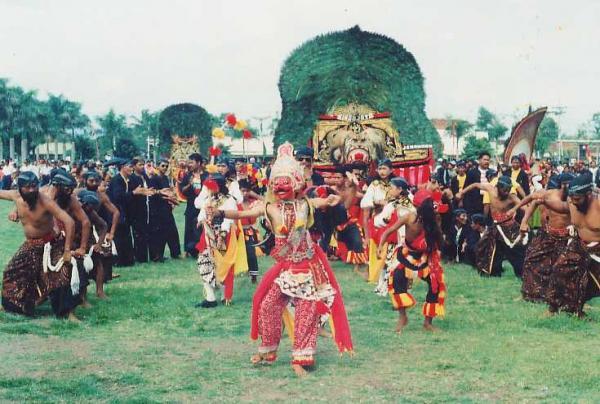Indonesian Local Dance : Revealling The Value Of Life From A Dance
 |
| Reog Ponorogo |
Indonesia is not only rich for its beautiful nature and its varieties of traditional language. However, Indonesia also has many kinds of traditional dances. Even, the dances have different elements in each district.
Not only the movement, but also Indonesian dances have a lot of stories about the values of life. Based on agrarian culture, Indonesian clans have done many ideas of dancing, like other arts, communally, for entertainment needs, traditional ceremony, or socio-cultural activities. In life arrangement, the feeling of togetherness becomes the central point of a value of dance.There are many parties that involve dancing surrounding us, and in the whole world in many kinds of events traditional or modern nuance. Just like Minangkabau’s custom, alek nagari (village party), the coronation of the village chief, wedding and many more, always involve dancing. another example in Batak, North Sumatera’s custom, almost all of the events involve dancing (general term, tortor).
Not only the movement, but also Indonesian dances have a lot of stories about the values of life. Based on agrarian culture, Indonesian clans have done many ideas of dancing, like other arts, communally, for entertainment needs, traditional ceremony, or socio-cultural activities. In life arrangement, the feeling of togetherness becomes the central point of a value of dance.There are many parties that involve dancing surrounding us, and in the whole world in many kinds of events traditional or modern nuance. Just like Minangkabau’s custom, alek nagari (village party), the coronation of the village chief, wedding and many more, always involve dancing. another example in Batak, North Sumatera’s custom, almost all of the events involve dancing (general term, tortor).
Even in Southeast Sulawesi, for example in Kalesusu Village, Buton, dance acompanies the people in almost every activity, starts when people are still in their mother’s womb until they die, therefore many people from other clans name them dancers clan. Whereas in Bali, it is very obvious that dance does not only come in all of the events, it also becomes a part of life, so does in other regions, such as Sumba, Timor, Sulawesi, Kalimantan, Papua, Jawa, etc. Dance can also come in social events, not only for stage performance.
Dance can also become the symbol of cultural expression because of its realization involves many participants. Therefore, cultural values, that are had by the people where the dances come from, will be presented in each dance. Dance can be said as the realization of cultural expression, including the varieties of ethnicity that are in its social scope.
For instance, Tortor dance Batak Toba in Silaen, North Tapanuli, North Sumatera, in ‘Parmalim’ ceremony shows that dancing can be personal, cultural, and spiritual expression. The function of dancing, especially group dance, is generally for spiritual, social, and cultural needs. Not only it is a ceremony, but it is also as an entertainment. It may happens because there is a movement in the function of dancing.
Another example in Java, in tayuban, Ronggeng (female dancer) generally becomes the target of entertainment for males. There many regions which have this kind of Javanese Dance, such as in Bali, this dance is called as Joged Bumbung; Bugis also have that kind of dance which is called as Pojoge (danced by females) and Pojoge angkong (danced by females and shemales); Melayu societies have Ronggeng Melayu, whereas Betawi has Cokek, and so on.
In Indonesia, it is felt that there is something that color the lifestyle of Indonesian majority. The sucessful of agriculture in harvest time or the sucessful of the sailors in the ocean are the happiest moment. Many people show their gratefulness and happiness in doing dancing performance, or other kinds of arts.
In this kinds of events, a person or a group of people communicate to other human beings, ancestors, or God. Dancings with all of its tradition are the symbol of people’s expression to be grateful for God’s grace.
Therefore, dance is not only for en-tertainment. It has the values of life. Hopefully, as Indonesian people, we can conserve traditional dancing as one of the arts and
as a part of local wisdom that needs to be studied for a better life. Cheers!



Comments
Post a Comment
Do not SPAM in My Blog Comment ! I Will Blacklist ALL SPAMMER !